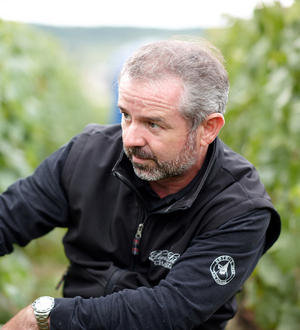2010 Champagne Pierre Peters, Cuvée Spéciale Les Chétillons, Blanc de Blancs, Grand Cru, Brut
- White
- Dry
- Full Bodied
- Chardonnay
- Stephan Reinhardt
- 93/100
Add to wishlist
Product: 20101212527
75 cl Bottle
150 cl Magnum
Colour White
Sweetness Dry
Vintage 2010
Alcohol % 12
Grape List Chardonnay
Body Full Bodied
Property Champagne Pierre Péters
Critics reviews
Stephan Reinhardt 93/100
The 2010 Blanc de Blancs Grand Cru Les Chetillons Cuve Speciale shows an elegant and flowery nose with up-front fruit and refined mocha bean, brioche and caramel aromas. Delicate and fruity on the palate, this is a round and very charming but also pure and well-structured Chardonnay with nice maturity. It is not as energetic and complex as the 2011 perhaps, but it is very intense. 2010 is an average vintage with very feminine wines with white fruit flavors but less chalkiness compared to 2011, says Rodolphe Pters. Disgorged in October 2017 with a dosage of four grams per liter. Tasted in April 2018.Stephan Reinhardt - 31/08/2018
About this wine

Chardonnay
Chardonnay is often seen as the king of white wine grapes and one of the most widely planted in the world It is suited to a wide variety of soils, though it excels in soils with a high limestone content as found in Champagne, Chablis, and the Côte D`Or. Burgundy is Chardonnay's spiritual home and the best White Burgundies are dry, rich, honeyed wines with marvellous poise, elegance and balance. They are unquestionably the finest dry white wines in the world. Chardonnay plays a crucial role in the Champagne blend, providing structure and finesse, and is the sole grape in Blanc de Blancs.

Champagne Pierre Peters
The loquacious and extremely likeable Rodolphe Péters of Champagne Pierre Péters is one of the most highly respected champagne growers in Le Mesnil-sur-Oger, where 12 of his 17 hectares are located. The style of Le Mesnil Champagnes, differing markedly from more gentle siblings from villages such as Cramant, focuses on mineral power and capacity to age. Péters is the master of this art; a full malolactic fermentation and moderately high fermentation temperatures serve to tame the steely acidity of the wines, but in no way diminishes their inherent power and potential to develop over the medium to long term. The non-vintage bottlings always incorporate a significant proportion- up to 40% - of reserve wine assembled over decades by saving back a portion of each year's blend and adding it to a solera.
